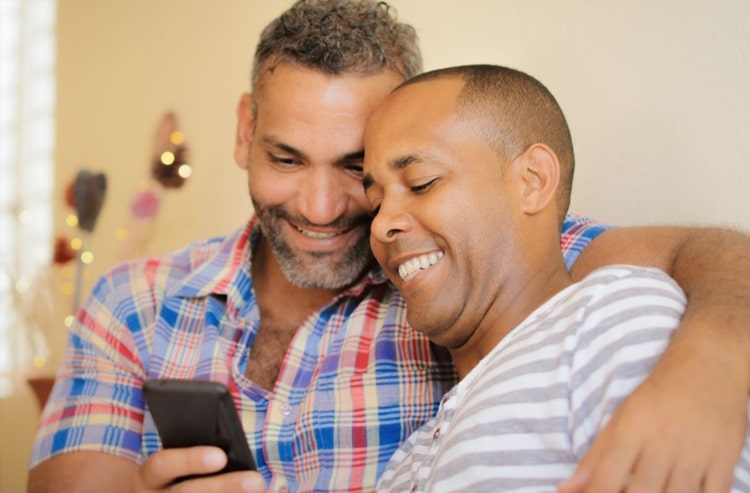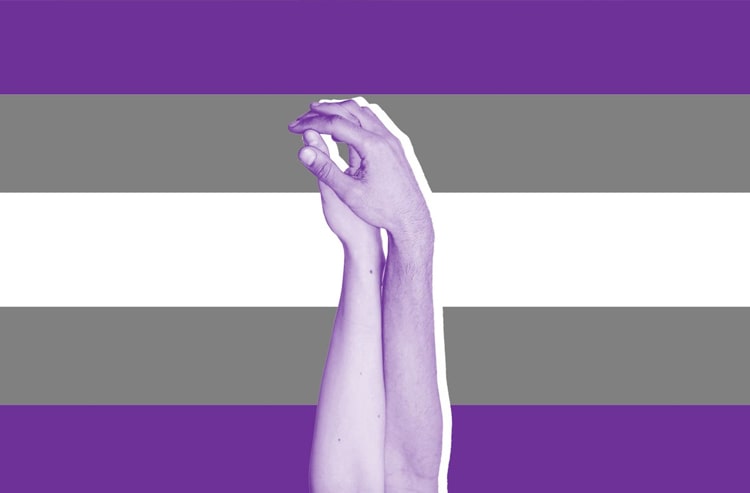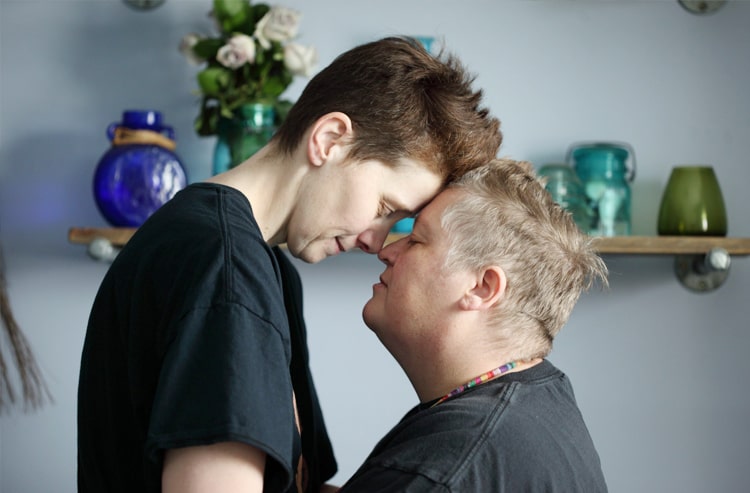Are you aware gray sexuality is increasingly becoming popular as more people explore sexual liberation? Unlike in the past, where people had to fit in the straight or gay box, research has proven that sexuality is a spectrum, allowing people with unique sexual identities to feel acknowledged, seen, and supported.
For queer people whose sexual attractions are not as consistent as those of gay or straight people but are not necessarily, it can be confusing trying to find an identity that perfectly fits your sexual experience.
Fortunately, with gray sexuality, individuals whose sexual attractions fall between sexual and asexual orientations can find an identity that affirms their assumed sexual orientation identity. In this article, we will discuss everything you need to know about gray sexuality and tips to help you navigate relationships as a grey-sexual person.
Gray sexuality: What is it and why you should know about it
Did you know that gray sexuality is part of the asexuality spectrum?
Gray sexuality, also known as grey sexuality, gray asexuality, gray ace, gray a, or gray ace, is an umbrella term for people whose sexuality falls within the asexual spectrum but has a low or infrequent sexual attraction to others.
As the name suggests, grey sexuality means that your sexual identity is hard to define because it falls in a grey area, meaning the term is non-committal enough to cater to everyone on the ace spectrum. Like most sexual identities that fall outside cultural norms, gray sexuality is subject to rumors, misconceptions, and myths that are consciously or unconsciously created to build suspicion upon this identity.
Fortunately, we have created a comprehensive guide to help you learn everything you need to know about grey sexuality. Here are key points to know about grey sexuality:
· What does it mean to be graysexual?
Have many people you know do you think are greysexuals? Compared to heterosexual and unambiguous queer identities like gays and lesbians, the grey ace community is relatively unknown. But does that mean they don’t exist or didn’t in the past? Certainly not!
For the most part, people with grey sexuality are usually lumped up with asexuals. But what is grey sexuality, and what does it mean to be graysexual?
There is no one way to be a greysexual person. While there are common characteristics among greysexual people, every person’s experience is different and unique. As a graysexual person, you can experience sexual attraction infrequently, meaning you can feel sexual attraction but randomly.
Gray sexuality can also mean you experience sexual attraction but very weakly. Gray sexuality is a spectrum between asexuality and being sexual, which means even the lowest level of sexual interest qualifies you to be part of this amazing sexual orientation.
Keep in mind that there is a distinction between weak sexual attraction to other people and a low libido. A person can have a low libido for several reasons, including hormone imbalance, age, a mental condition, or medical-related causes, so having a low libido doesn’t necessarily make you greysexual.
Gray asexuality can also mean that one can experience a sexual, sensual, or physical attraction but have no desire to explore these attractions. For instance, some graysexual people don’t believe feeling sexual attraction is a prerequisite to having sexual intimacy, so they don’t want to act on it.
· Can a gray sexual person experience romantic feelings?
Being part of an evolving identity can be overwhelming. Simple things such as a romantic relationship, physical attraction, or sexual attraction that are obvious to other sexual orientations can take years to figure out when you go sexual.
So, can a greysexual person experience a romantic attraction? Certainly! Greysexual people can experience a romantic attraction to another person.
Keep in mind that your romantic orientation and sexual identity are not always interlinked. Because romantic orientations are expressed in relation to a particular individual, it’s possible to have several romantic orientations since different people are attracted to people of different sexual orientations.
As a grey sexual person, you can be aromantic, meaning you don’t have a romantic attraction towards other people regardless of gender. You can also identify as a demiromantic, meaning you can develop a romantic attraction with people you share a strong emotional connection with.
Additionally, a grey sexual person can also identify as a gray romantic, an aromantic orientation for people who experience romantic attraction infrequently.
· Are asexual and graysexual people different?
Although the grey ace community is considered a part of the asexuality spectrum, they have minor differences that necessitate grey aces to be given a category of their own. Asexuality is an umbrella term for dozens of identities, including graysexual, aegosexual, demisexual, and lithosexual.
In the broadest sense of the word, asexuality refers to individuals who are sex-repulsed, sex-neutral, or sex-positive. While some grey ace people are sex-repulsed, sex-neutral, and sex-positive, not everyone can fit into these broad categories.
The gray ace orientation is intentionally vague to embrace everyone whose sexual orientation falls outside the sexual and asexual identity. The ambiguity surrounding grey sexuality creates a gray area that allows people with different non-traditional sexual experiences to have a sense of identity.
· Grey sexuality is a valid sexual orientation
If a person’s attraction or lack of attraction determines their sexual orientation, then it’s not surprising that there are multiple sexual orientations as there are different types of attractions, including:
· Romantic attraction
Romantic attraction refers to an individual’s expression of love towards a romantic partner.
· Platonic attraction
Platonic attraction refers to the desire to build friendships with others regardless of gender.
· Aesthetic attraction
Aesthetic attraction refers to an attraction toward other people based on their appearance. An aesthetic attraction is skin-deep, so it doesn’t require an emotional connection.
Working on the premise that your attractions or lack thereof determine your sexual orientation, then grey sexuality is a sexual orientation in its own right. As a graysexual person, your sexual orientation identity is as valid as other populous identities, including homosexuality and heterosexuality.
· Misconceptions about grey sexuality
Sexuality is one of the most controversial topics of the 21st century, not because the concept is hard to grasp, but because of extremists, traditionalists, and religious fanatics who are scared of anything that doesn’t fit their narrative.
Unfortunately, because of hatred and ignorance, countless queer people go through periods of fear, confusion, and mental and physical torture just because they don’t conform to social constructs.
One of the biggest misconceptions about grey sexuality is the assumption that you aren’t the right person. Grey sexuality is a sexual orientation, and it’s not dependent on your relationship status. Experiencing sexual attraction is personal, and no one person’s experience is identical to others.
Invalidating someone’s sexual orientation because of personal bias borders on mental abuse, if not an outright human rights violation. The unfortunate thing about the ‘You haven’t the right person’ misconception is that even people within the LGBTQIA+ community propagate it.
Whether it’s because of ignorance or intentionally harming people minorities within the LGBTQIA+ banner, questioning, targeting, or invalidating the graysexual identity is sometimes more harmful when it comes from queer people.
Another common misconception about grey sexual orientation is that it’s a consequence of sexual trauma. Contrary to what toxic traditional-centric sexual enthusiasts may have you believe, a grey ace isn’t a deformity, nor is it a consequence of bad sexual experiences.
You don’t become graysexual because of childhood trauma or past sexual experiences. While past sexual experiences can play a part in helping you discover your sexual orientation, they have nothing to do with your inner sense of being because it has always been there.
How to make a relationship work as a gray sexual person
If you are wondering if you can have a blissful relationship as a graysexual person, it’s totally possible. Your sexual orientation is not a hindrance to building healthy and mutually satisfying relationships. Some tips to help you navigate relationships as a graysexual person include the following.
· Communicate, communicate, and communicate
The best way to ensure your relationship flows smoothly is to communicate clearly between you and your prospective partners. Whether in a romantic, platonic, or purely physical relationship, communicating your needs can protect you from future misunderstandings that can result in heartache.
Ideally, have a conversation about what you want from the relationship, do’s and don’ts, and plans if you want the relationship to be long-term.
· Don’t make assumptions.
Don’t make assumptions about what prospective partners know about your sexual orientation. While we live in an information age, not everyone keeps up to date with research about sex and sexuality. If there is something your partner should know about your sexual orientation, inform them and explain why it means so much to you.
You could offer to orient them about the ABCs of grey sexuality or point them to reputable sources to do their research.
Don’t forget that some of what is written on the internet is misleading, misinformed, wrong, or intentionally malicious. Showing them the right sources ensures they are well informed about what to expect when dating a grey asexual person.
Conclusion
Gray sexuality is an important part of the queer community. As more people become open to exploring their sexuality, sexual identity is increasingly becoming popular, allowing greysexuals to experience life in their authentic selves.



















